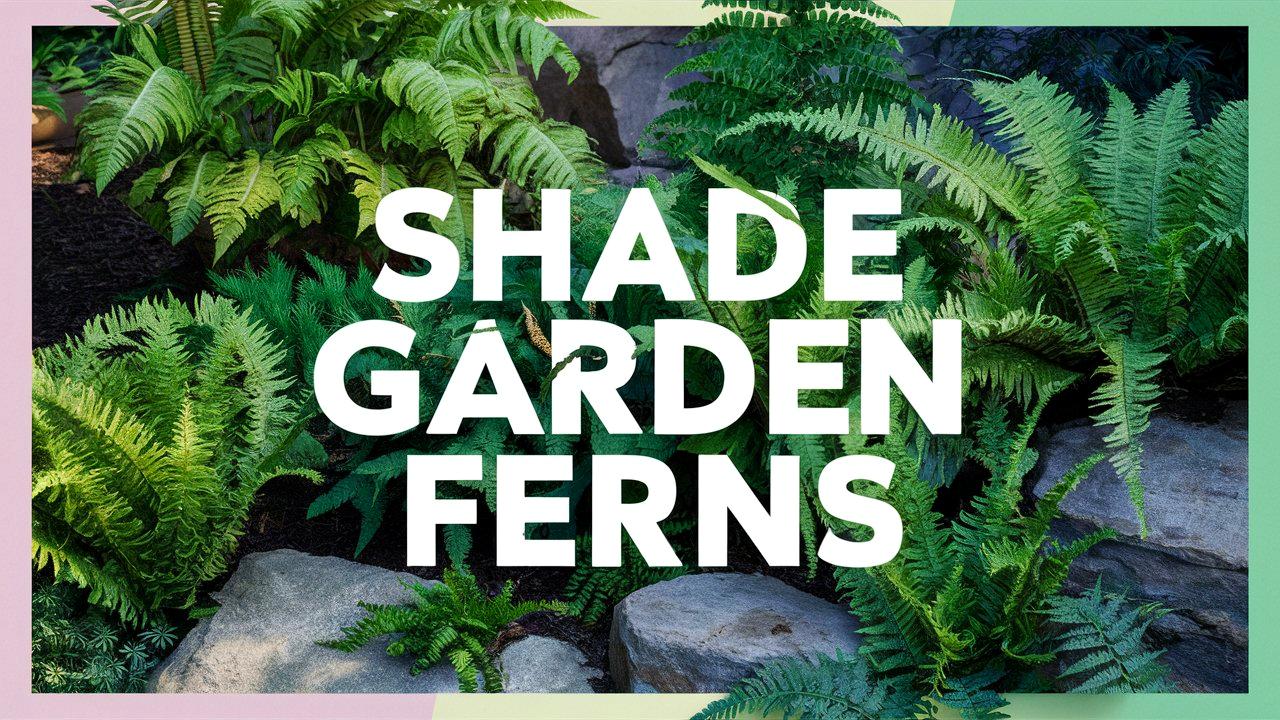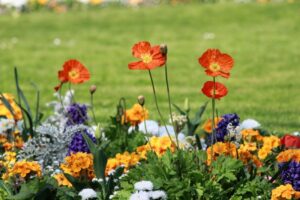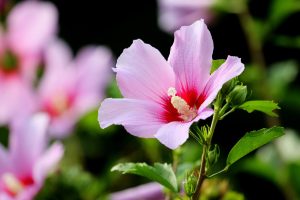Creating a paradise of greenery in shady corners of your garden can be a rewarding endeavor, especially with the stunning variety of ferns available. Perfect for spaces that receive little sunlight, shade-loving ferns bring a lushness and texture that can transform an otherwise lackluster area into a thriving sanctuary filled with vibrant life.
In this guide we’ll cover the enchanting world of shade-loving ferns, providing insights into specific varieties that not only thrive in low-light conditions but also help beginners like you create a flourishing garden. Let’s explore these botanical wonders together!
Wallich’s Wood Fern
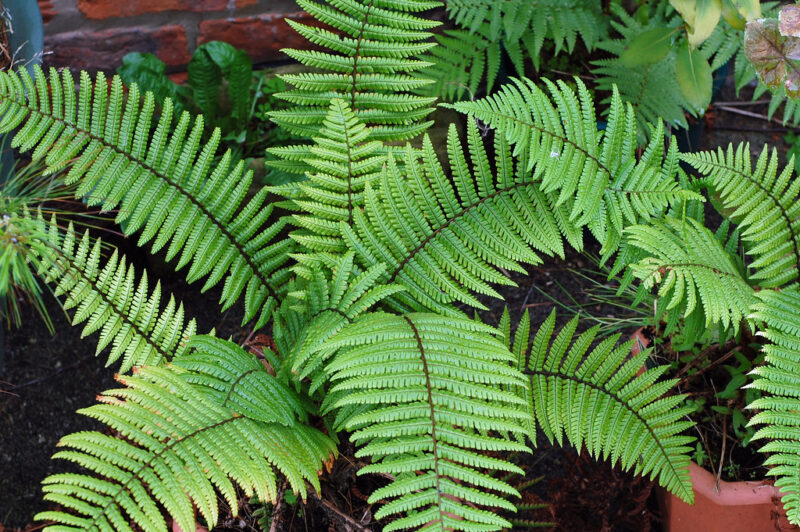
Wallich’s wood fern (Dryopteris wallichiana) is a striking addition to any shade garden. Renowned for its dark green, feathery fronds that can reach heights of 2 to 3 feet, this fern creates a lush backdrop in any shady corner. Native to mountainous regions of Asia, it’s particularly well-suited to cool and moist environments. Planting Wallich’s wood fern alongside other woodland plants can give you the feeling of a tranquil forest retreat right in your backyard. Furthermore, it requires minimal care, making it an excellent choice for beginners.
Sunset Fern
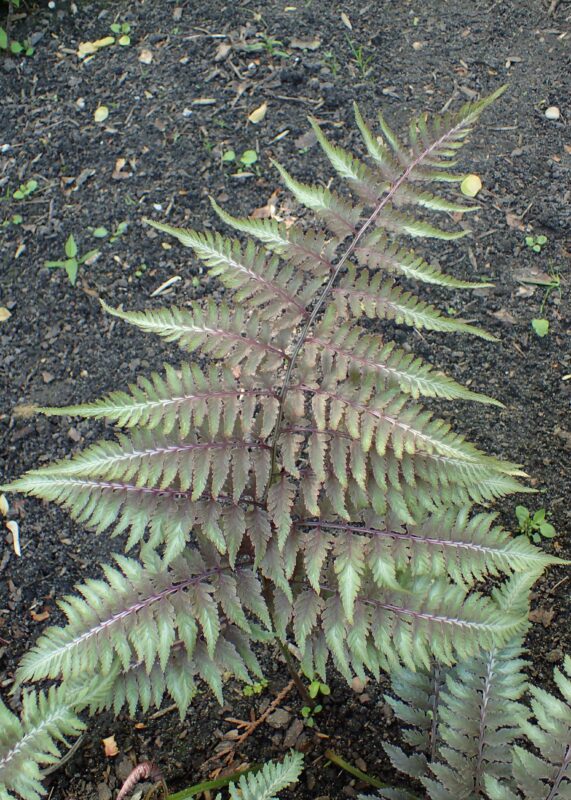
The sunset fern (Athyrium niponicum), also known as the Japanese painted fern, is a stunning specimen that features striking silvery-blue fronds with hints of burgundy. This beautiful fern can brighten up even the darkest corners of your garden, thriving in conditions with partial to full shade. Sunset ferns are particularly affectionate to well-drained soil rich in organic matter and enjoy regular watering to keep their roots moist. If you’re looking to add a splash of color to your shade garden, the sunset fern is an excellent choice with its eye-catching contrast against darker foliage.
Soft Shield Fern
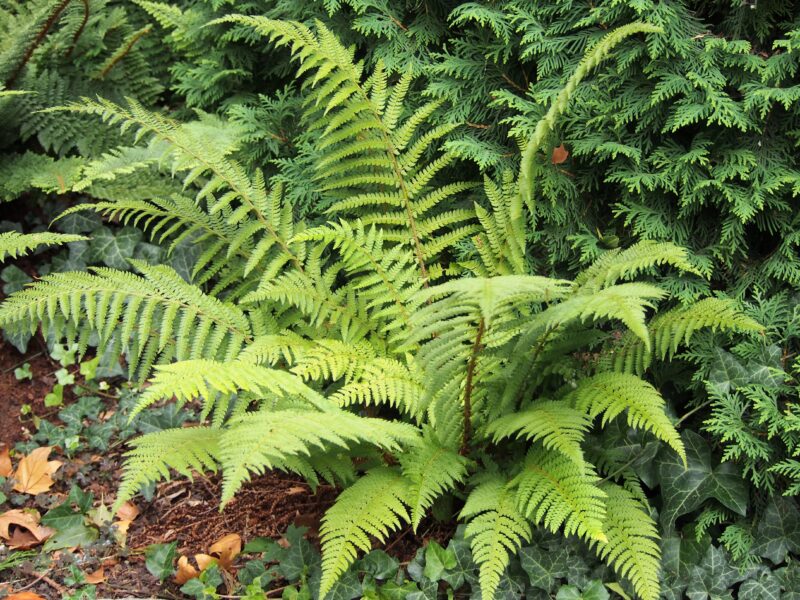
As its name suggests, the soft shield fern (Polystichum setiferum) is an incredibly tactile plant that brings a gentle softness to your garden. This fern exhibits arching fronds that can grow up to 3 feet tall and provide a rounded silhouette. The soft shield fern is adaptable and can thrive in both dry and wet conditions, although it flourishes best in a rich, well-draining soil. Its evergreen nature means it will maintain its beautiful foliage year-round, making it a lasting feature of your shady garden.
Tassel Fern
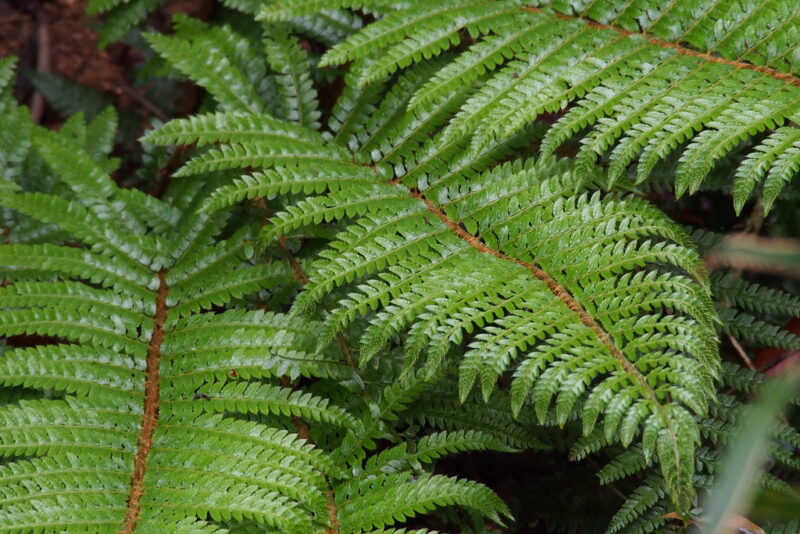
The tassel fern (Polystichum polyblepharum) is a delightful sight with its gracefully arching fronds that cascade like a waterfall, creating a soft, textured look in shady spots. Known for tolerating varying moisture levels, this fern can handle a range from dry to damp environments. The tassel fern is also known for its resilience, making it perfect for novice gardeners. Its adaptability to different soil types means that even if you’re unsure about your garden’s conditions, this fern is likely to thrive.
Lady Fern
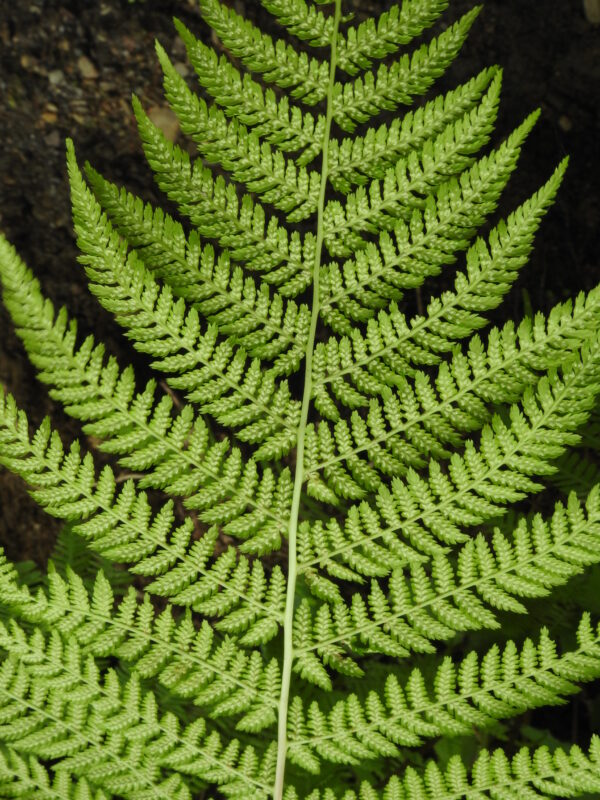
The lady fern (Athyrium filix-femina) offers a classic look, with finely divided, delicate fronds that can grow up to 2 feet tall. This native fern is a favorite for woodland gardens, providing a graceful presence with its feathery appearance. Lady ferns are incredibly easy to care for, requiring little more than moist, well-drained soil and indirect sunlight. Their ability to spread makes them ideal for naturalizing garden areas, filling empty spaces with lush greenery effortlessly.
Hart’s Tongue Fern
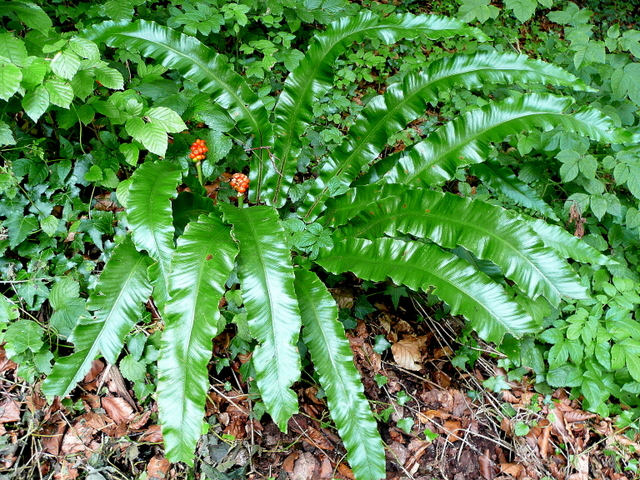
For a unique addition to your shady garden, consider the Hart’s tongue fern (Asplenium scolopendrium). With its distinctive strap-like fronds, this fern stands out among its more traditionally shaped cousins. This hardy plant adapts well to various soil types, thriving in damp, wooded areas. It prefers minimal direct sunlight, making it ideal for regions with heavy tree cover. The Hart’s tongue fern is particularly helpful in areas with less foot traffic, as its unique shape and anatomical structure create a whimsical feel in shaded gardens.
Holly Fern
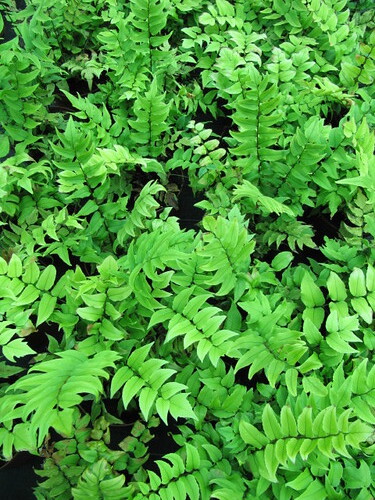
The holly fern (Cyrtomium falcatum) adds a touch of elegance with its glossy, holly-like leaves that maintain their vibrant green color throughout the year. This fern is particularly well-suited for garden beds with partial shade, as well as shaded areas beneath trees. The holly fern is also relatively drought-tolerant, making it a wonderful choice for gardeners in varying climates. Its robust nature and lovely foliage make it an excellent option for beginners looking to achieve a lush look with minimal fuss.
Ferns that Can Tolerate Deep Shade
While many ferns thrive in partial shade, others have developed special adaptations that allow them to flourish in deeper, more shaded areas. If your garden has spots where light barely penetrates, fear not! Here are some ferns that can handle these darker conditions with grace.
Ostrich Fern
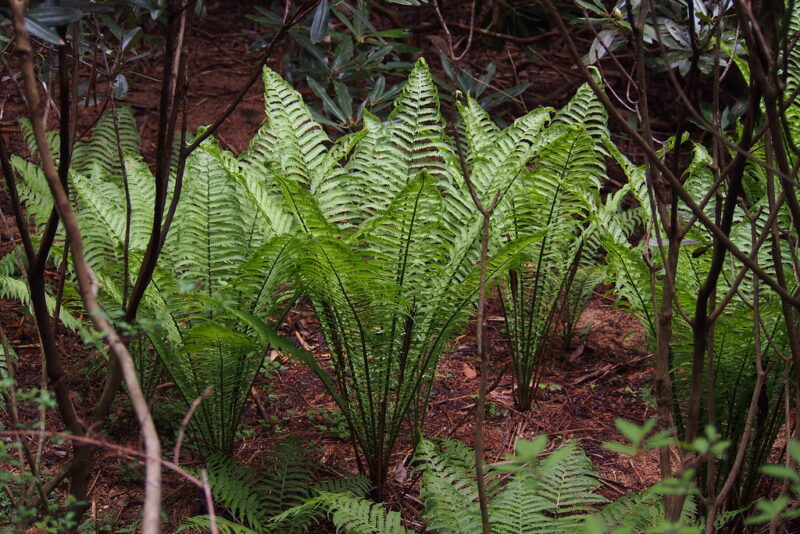
The ostrich fern (Matteuccia struthiopteris) is a robust fern known for its towering fronds that can grow up to 4 feet tall, resembling the plumes of an ostrich. This fern is particularly effective for areas with moist, rich soil, and it’s frequently found in the wild near streams and rivers. Ostrich ferns thrive in deep shade, making them perfect for gardens where sunlight is scarce. With large, lush fronds, they add a dramatic element to shaded pathways or under the canopy of taller trees.
Royal Fern
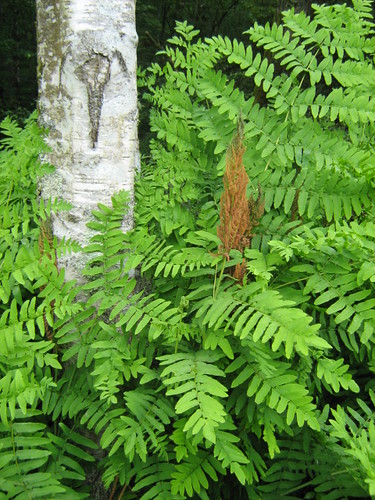
As one of the few ferns with a regal name, the royal fern (Osmunda regalis) lives up to its title with its impressive stature and striking appearance. This fern can grow up to 5 feet tall, boasting fronds that unfurl into a delicate, lace-like design. Royal ferns prefer moist, acidic soils and can handle prolonged periods of shade. Their ability to thrive in less-than-ideal conditions makes them a fantastic choice for beginner gardeners looking to create an imposing green backdrop in their shaded landscapes.
Marsh Fern
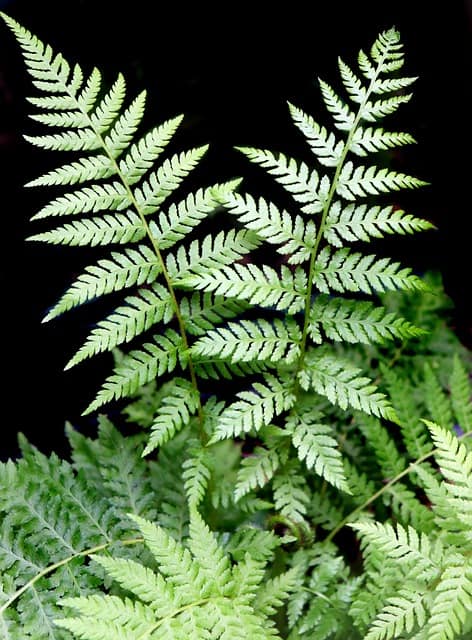
True to its name, the marsh fern (Thelypteris palustris) thrives in wetland conditions, often flourishing in swamps and bogs. This fern comfortably tolerates deep shade and performs well in soil that stays consistently moist. It has a height of about 2 to 3 feet, and its light green fronds provide a refreshing touch to your shade garden. The marsh fern is an excellent option for wet areas in your garden, helping to stabilize soil while adding lush greenery.
Northern Maidenhair Fern
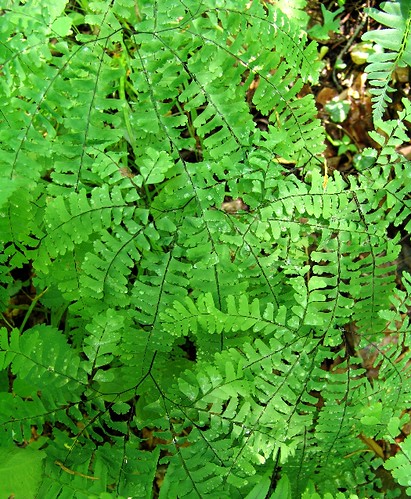
Adored for its delicate appearance, the northern maidenhair fern (Adiantum pedatum) is a standout among shade-loving ferns. Its dainty, fan-shaped leaflets grow on thin, graceful stalks, creating an ethereal quality that can enhance any dark space. This fern requires a bit of care to maintain its moisture, so be sure to plant it in a location with rich, organic soil. The northern maidenhair fern flourishes in deep shade and adds a delicate charm to your shady garden area.
Japanese Painted Fern
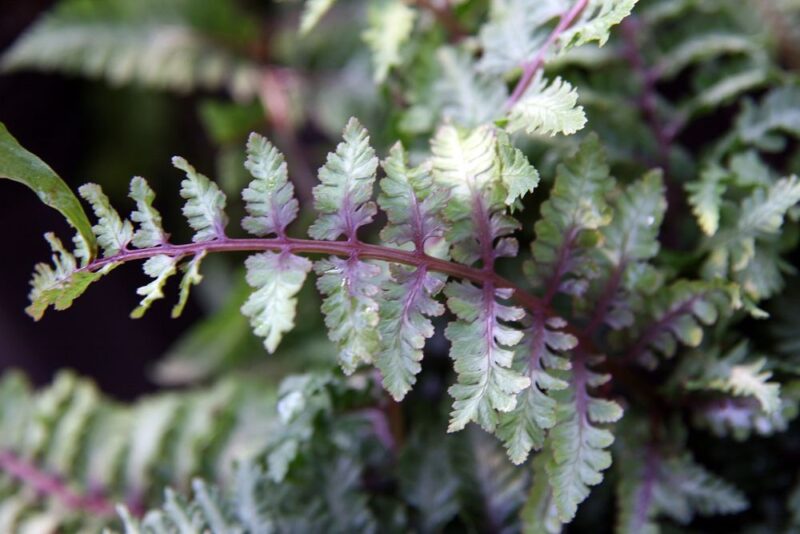
There is something truly enchanting about the Japanese painted fern (Athyrium niponicum var. pictum), which showcases a unique blend of purple and silver hues. This fern is not only a great choice for shaded gardens but also brings a gentle elegance with its color. Japanese painted ferns thrive in moist, well-drained soil and prefer shade to partial sunlight. Their striking visual appeal and easy maintenance make them a popular choice for gardens focused on subtler beauty.
Autumn Fern
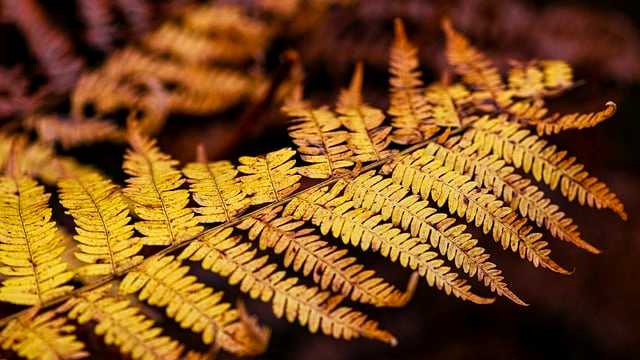
The autumn fern (Dryopteris erythrosora) is another lovely addition, particularly for those looking for a fern with seasonal interest. As new fronds unfurl in the spring, they display a vibrant coppery hue that transitions to rich green as summer approaches. This fern is tolerant of deep shade and enjoys moist, well-drained soil. Autumn ferns are low-maintenance and resilient, making them an ideal choice for beginner gardeners aiming to feature seasonal beauty in their shade gardens.
Best Indoor Ferns for Shady Corners
If you’re eager to bring the lush aesthetic of ferns indoors, you’re in luck—many ferns not only thrive in shade but are also perfectly suited for interior spaces. Below are some of the best indoor ferns that can thrive in drab corners of your home.
Maidenhair Fern
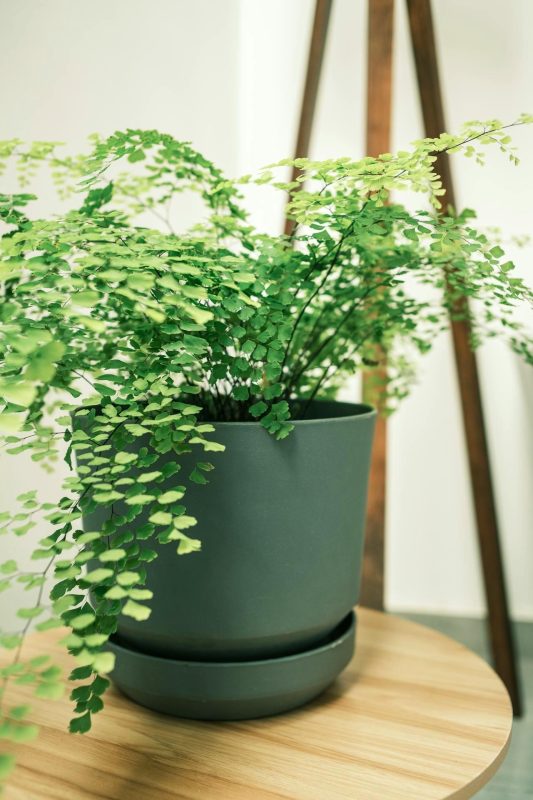
The maidenhair fern (Adiantum spp.) is a top choice for interior spaces. With its delicate, cascading fronds, this fern adds a touch of sophistication to any room. However, maidenhair ferns do require consistent moisture, making them a bit more demanding than other indoor specimens. Be sure to place them in an environment with indirect light to prevent scorching, and keep the soil consistently damp. With a little care, this charming fern will display lush foliage throughout your home.
Silver Lace Fern
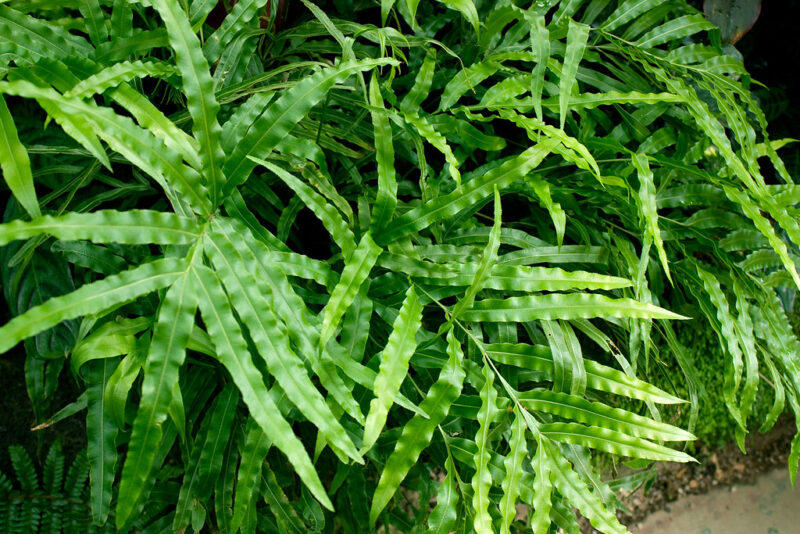
The silver lace fern (Pteris cretica var. albolineata) is known for its striking silver-yellowish markings on its fronds. This uniquely patterned fern thrives in indirect light, making it perfect for shaded rooms, including offices and living spaces. It’s relatively easy to care for, requiring only moderate watering and well-draining soil. The silver lace fern’s eye-catching aesthetics elevate any indoor setting, making it a popular choice for fern enthusiasts.
Rabbit’s Foot Fern
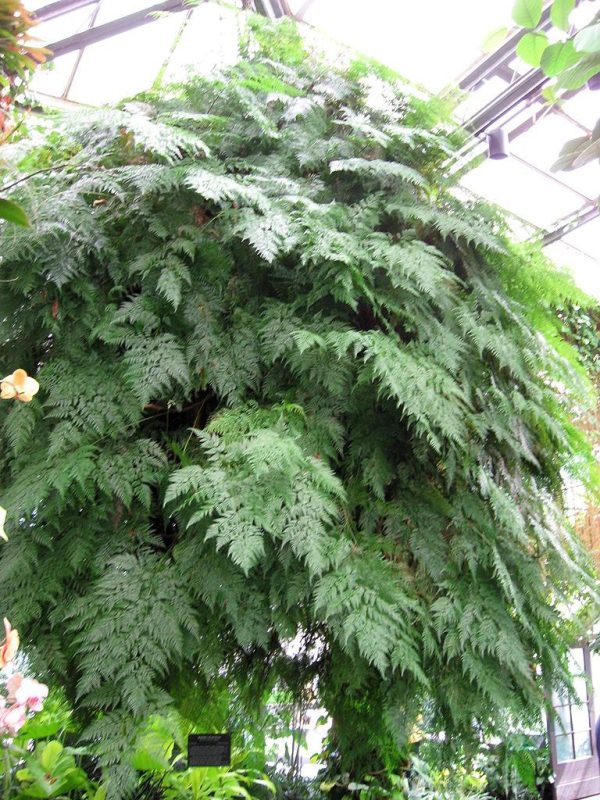
With its distinctive furry rhizomes that resemble a rabbit’s foot, the rabbit’s foot fern (Davallia fejeensis) adds a playful touch to your indoor plant collection. This fern prefers indirect light and high humidity, making it an ideal candidate for bathrooms or kitchens. The rabbit’s foot fern does need to be watered regularly, but its unique appearance and hardy nature make it worth the extra effort for interior gardeners.
Macho Fern
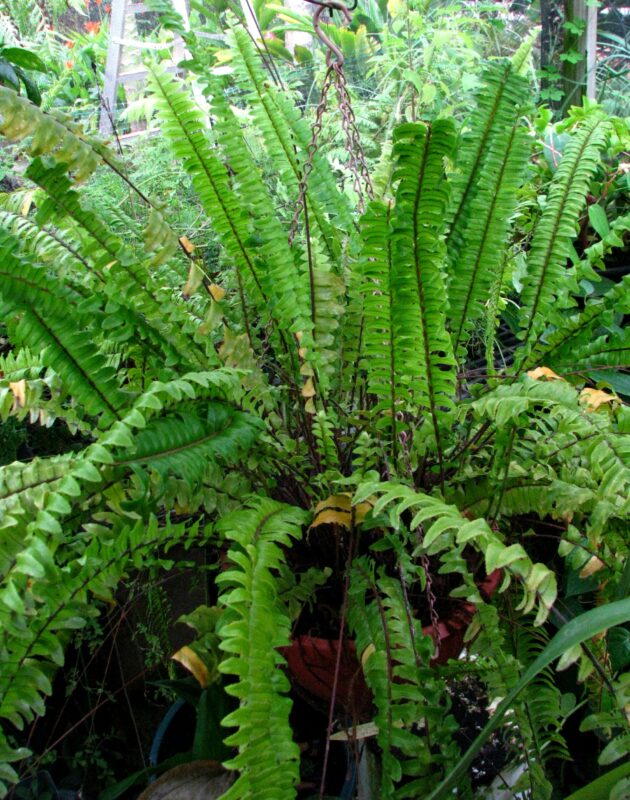
For those who prefer something a bit bolder, the macho fern (Nephrolepis exaltata ‘Macho’) is a compact and bushy option that can make a statement in any indoor setting. It has thick, glossy fronds that can grow quite large, making it a focal point in any dimly lit corner. The macho fern is very tolerant of lower light levels and prefers to be kept slightly drier than other ferns, making it a low-maintenance option for beginners looking to fill space with greenery.
Bird’s Nest Fern
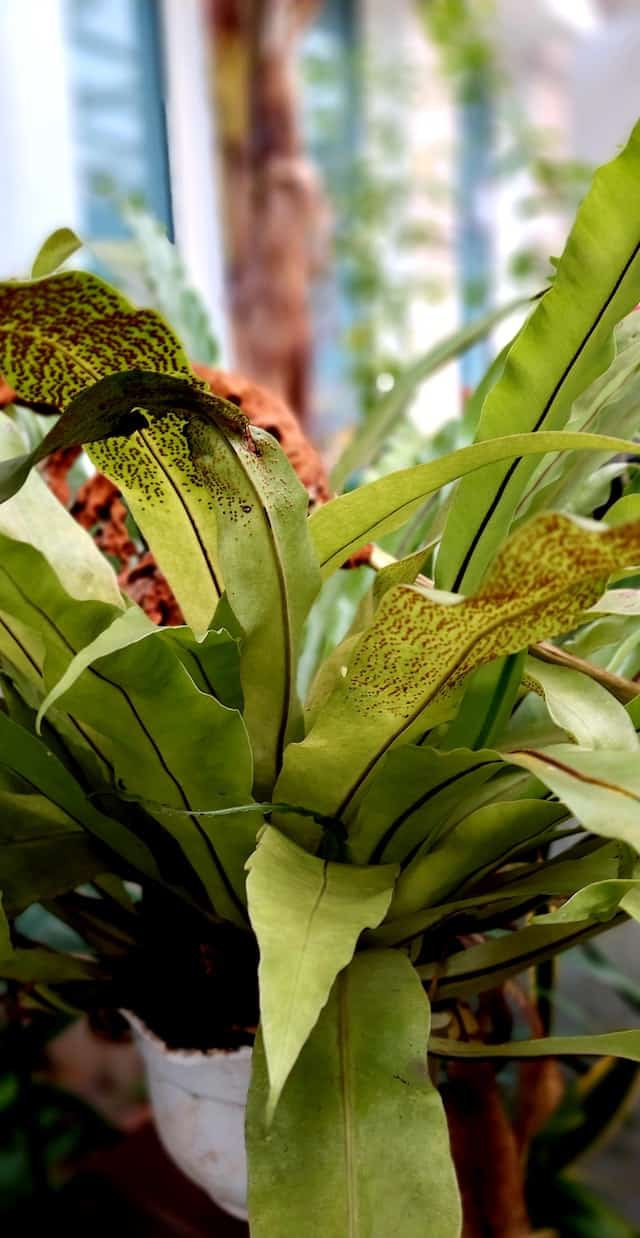
The bird’s nest fern (Asplenium nidus) is another fantastic choice for indoor environments, appreciated for its arching, glossy fronds that form a nest-like rosette. It thrives in lower light conditions and enjoys humidity, making it ideal for kitchens and bathrooms. The bird’s nest fern is incredibly forgiving and requires minimal maintenance. Regular misting will help maintain its humidity needs without the constant worry of overwatering.
Crocodile Fern
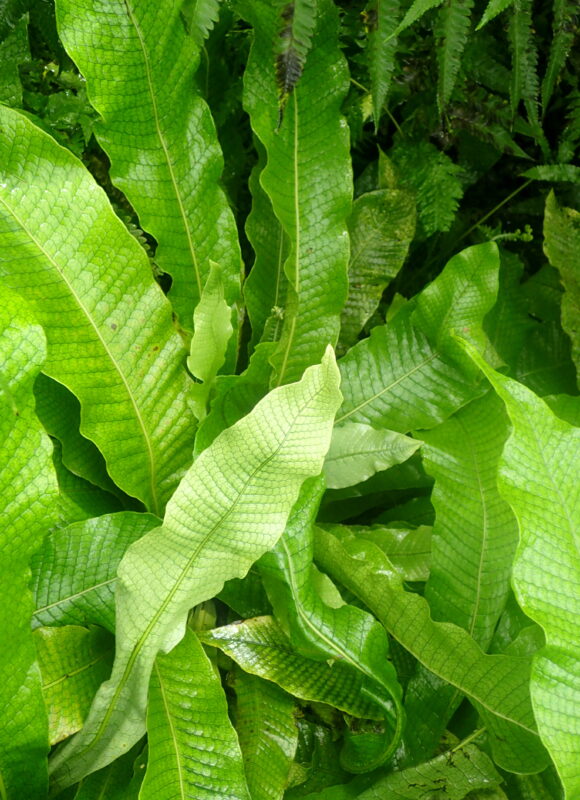
Last but definitely not least, the crocodile fern (Microsorum musifolium) provides a unique texture with its distinctly scalloped, crocodile-skin-like fronds. Like the others, it thrives in indirect light, making it perfect for low-light indoor areas. This fern appreciates humidity, so be sure to keep it misted or group it with other plants to create a microclimate. The crocodile fern’s fascinating pattern adds a whimsical touch to indoor plant displays, making it an exciting choice for plant lovers.


